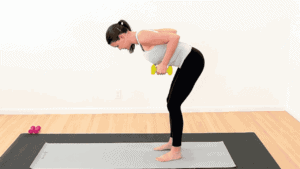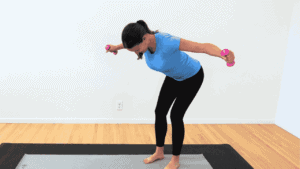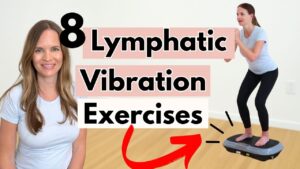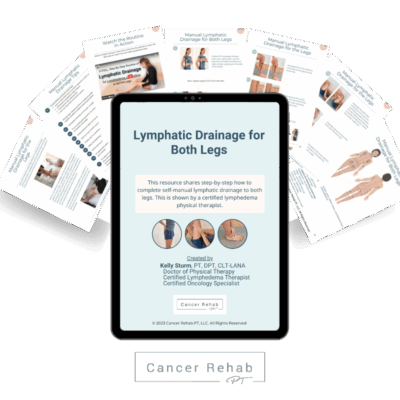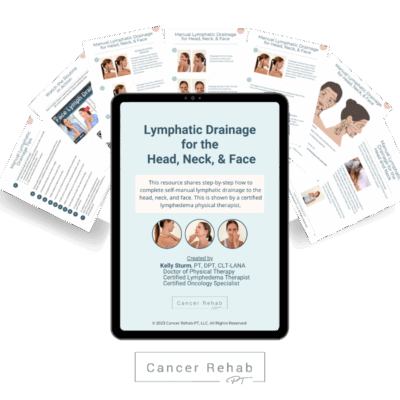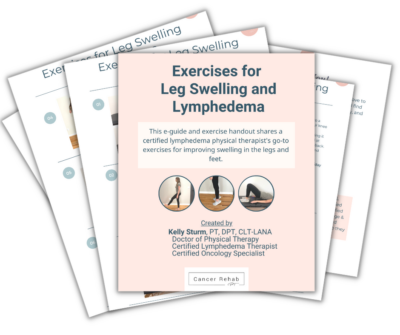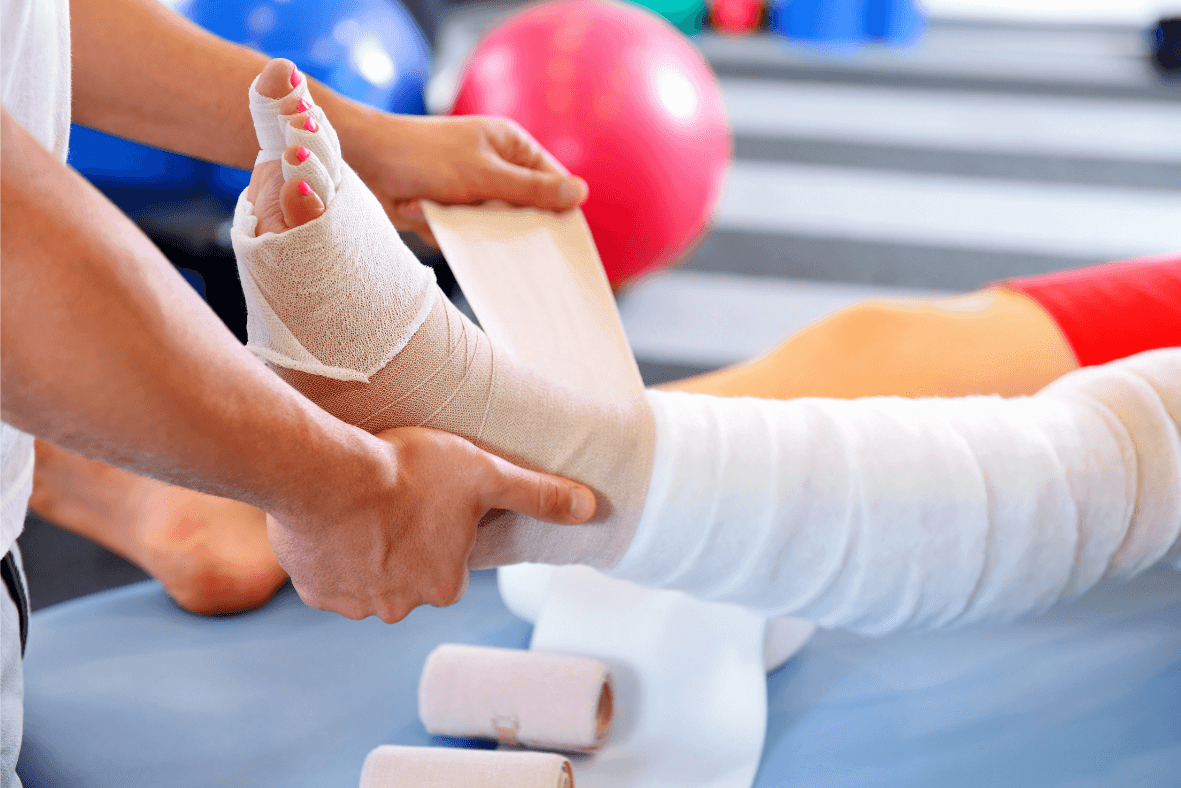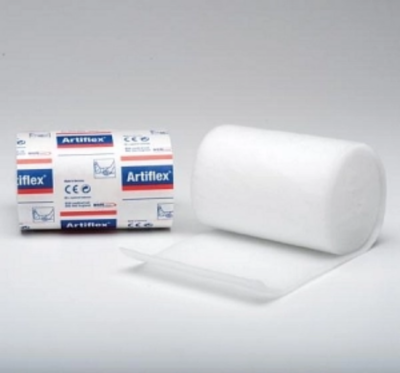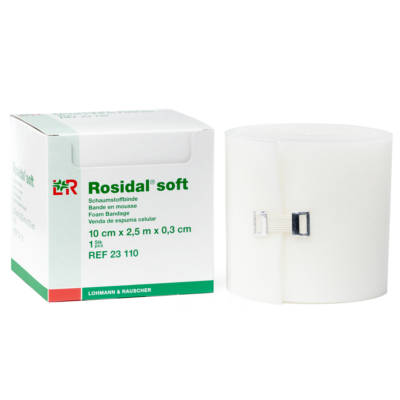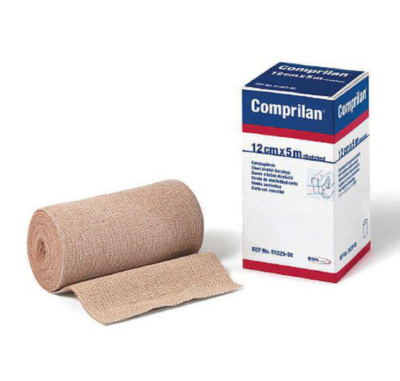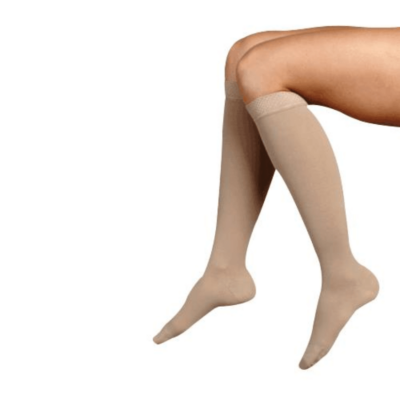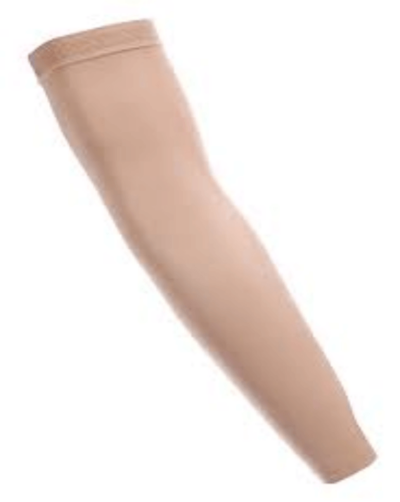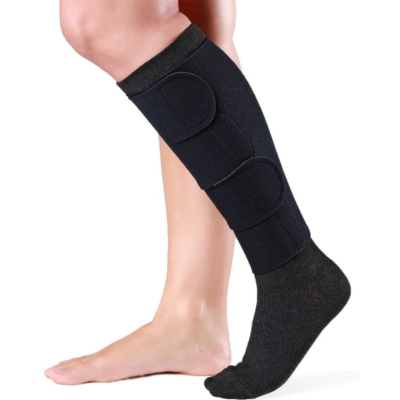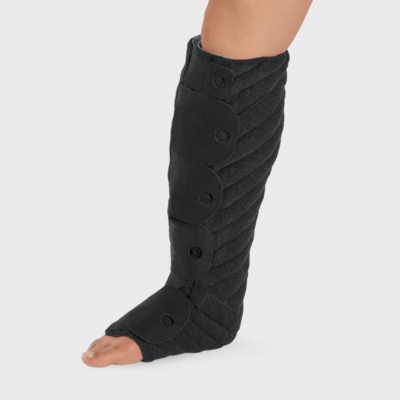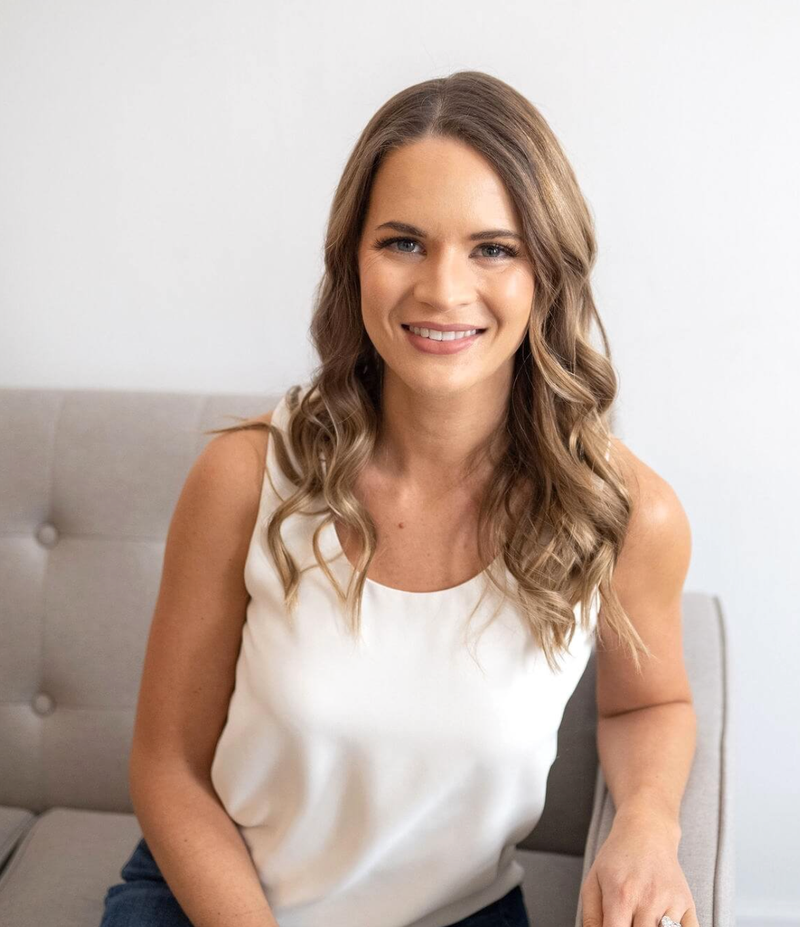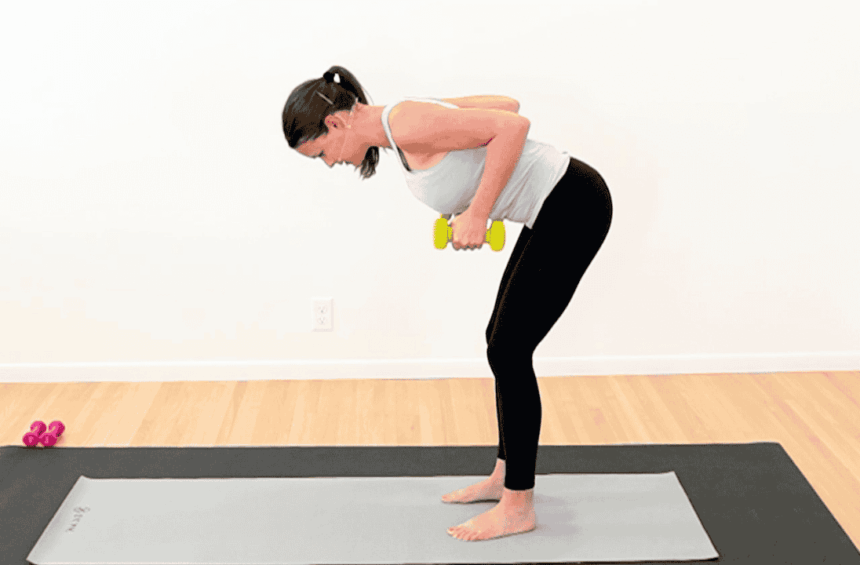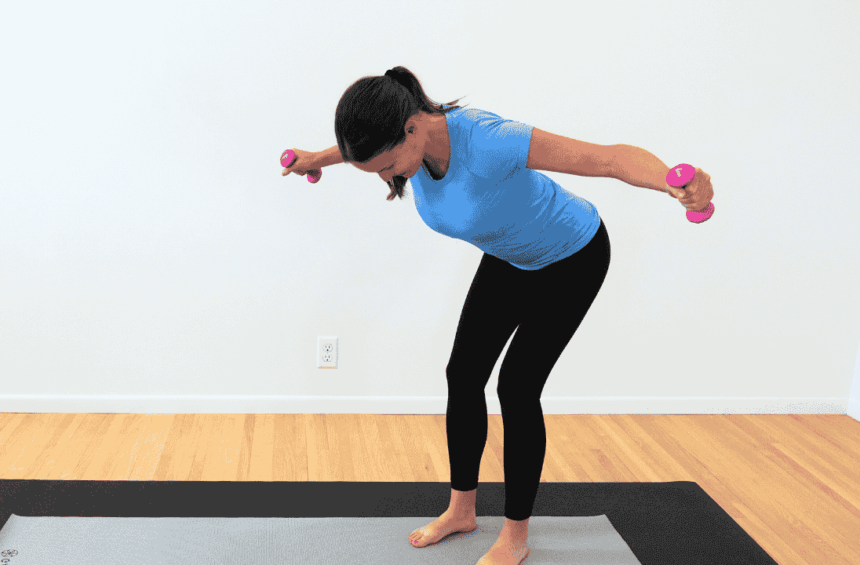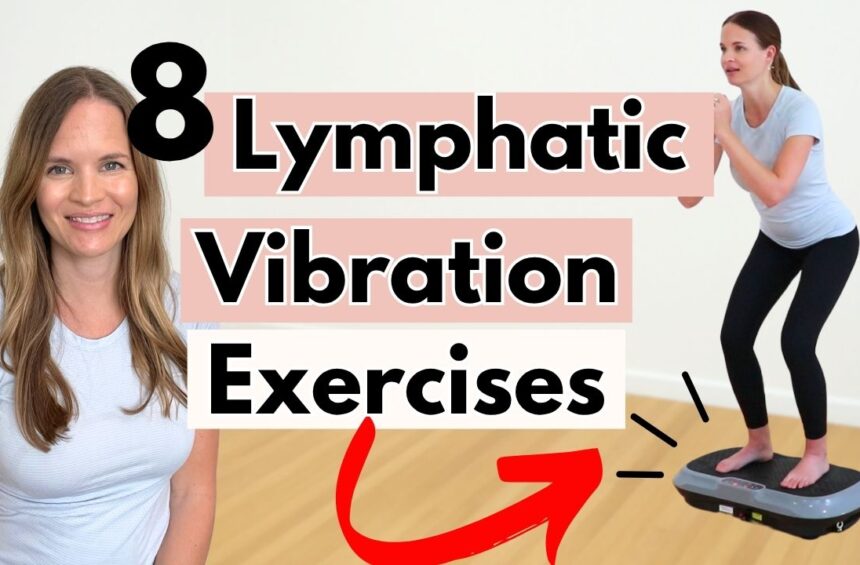Lymphedema is a progressive condition with no known cure. It affects millions of individuals in the United States and worldwide each year. This post will learn the most effective treatment options for lymphedema from a certified lymphedema physical therapist.
Lymphedema occurs when there is an excess of lymphatic fluid in the body’s tissues, causing swelling and discomfort. Without proper treatment and management, lymphedema can progress with worsening swelling, hardening of the skin and tissues, and decreased ability to move around and function. Lymphedema can also increase skin breakdown, wounds, and infection.
The goals of lymphedema treatment are to alleviate symptoms, reduce edema volume, avoid progression, and reduce the risk of infection. Let’s talk about the most effective treatment for lymphedema and what newer surgical treatments exist to help improve the management of this progressive condition and quality of life. To go more in-depth and learn techniques, treatment, and tips to manage leg lymphedema, join my Lower Body Lymphedema Program.
Complete Decongestive Therapy
Various ways can effectively reduce the size and volume of a swollen body area. Studies show that compression bandaging, compression garments, pneumatic compression pumps, and manual lymphatic drainage all cause a reduction in swelling and edema. However, the most significant decreases and improvements are seen when these treatment options are combined with Complete Decongestive Therapy (CDT).
Complete decongestive therapy is a noninvasive regimen consisting of two phases. The first phase lasts between an average of 2 and 6 weeks, and it includes
- Compression, multilayer bandaging
- Manual lymphatic drainage
- Exercises
- Skin cares
The goal of phase one is to reduce the limb volume and decrease edema in the area being bandaged. Once the maximal volume and swelling are reduced, phase two begins and continues long-term. This phase consists of a combination of
- Daytime compression garments
- Nighttime compression garments or bandaging
- Exercise
- Skin cares
- Other self-cares
As I explained above, combining the above is the most effective treatment for lymphedema, but one size does not fit all. Let’s go more in-depth on how each piece may play a role in managing lymphedema to decide for themselves.
Compression Bandaging for Lymphedema
Compression bandaging is one of the most effective ways to reduce lymphedema swelling. The bandages are called short-stretch bandages, and they are used with various types of cotton paddings and foam paddings to shrink the volume and size of the leg. They look similar to an ACE bandage, but they are different.
Compression bandaging for lymphedema is reported in studies to be the most critical factor in reducing the size of a limb within CDT. Some studies even show it to be just as effective alone as compared to bandaging with other components of the first phase. It’s essential to work with a certified lymphedema therapist to help show what specific foams and paddings are best for skin softening and safety.
You can watch an arm bandaging routine here or a leg bandaging routine below for general self-bandaging routines.
Manual Lymphatic Drainage for Lymphedema
Manual lymphatic drainage (MLD) is a gentle massage-like technique used to help stimulate and guide the lymphatic fluid back into lymphatic vessels and out of the congested area. It is done in a specific sequence and direction, using a hand with light pressure to brush and stretch the skin lightly. It’s something someone can do at home if cleared by their doctor.
MLD is a standard component of complete decongestive therapy, but it has mixed results in its benefits in studies. Some studies report that MLD can help reduce mild lymphedema but may not be effective for severe swelling and lymphedema. Another study showed that MLD and compression bandaging is not more effective than bandaging alone, questioning if it plays a role in reducing lymphedema. However, other studies show a positive reduction in lymphatic build-up and lymphedema when lymphatic drainage is completed.
So what does this mean? Is it an effective treatment for lymphedema or not? Due to the inconsistency, MLD should remain a treatment option for lymphedema, but it shows that one particular treatment regimen isn’t best for everyone. The best treatment program should be one that is individualized for someone. This may need trial and error, but someone needs to learn for themselves if MLD helps his, her, or their symptoms.
To learn the correct sequence and technique for manual lymphatic drainage, you can find videos for various parts of the body in my lymphatic drainage routine playlist.
Exercise for Lymphedema
Exercise and movement are crucial for lymphedema management. The muscles act as a pump to the lymphatic system and the veins. By contracting and stretching your muscles, you can stimulate the vessels to move the fluid.
Popular exercise options for lymphedema include cardio exercise in the pool or gentle aqua movements, walking, and rebounding exercises using a mini trampoline. The best exercise for lymphedema is that you enjoy and can be consistent with.
I have created other videos and exercise routines for these and home workouts that you can follow and search through in this playlist.
Skin Care
The final component of complete decongestive therapy is skincare. Your skin is the main barrier to keeping out bacteria and avoiding infection. Keeping the skin healthy and protected for lymphedema is vital for overall health. For more guidance, you can hear my top 10 tips on skincare for lymphedema here.
Compression Garments
Compression garments are specially made to support the lymphatic system and help avoid fluid from filling in the body. They may reduce mild swelling and edema alone, but they are used as a maintenance garment for severe lymphedema to prevent swelling from returning. They are sized and fitted after an individual finishes phase one of CDT.
Compression garments may not effectively treat lymphedema if the wrong kind is being used. There are so many kinds of garments out there, and it can be very overwhelming to figure out what is best. There are some main categories to go through briefly, but if you would find it helpful for me to go more in-depth on the kinds of garments, please comment below!
- Circular knit garments are elastic and usually come ready-to-wear in sizing. A standard medical-grade level is 20-30mmHg but does come in various compression levels. These work well for mild swelling but are not effective for moderate or severe lymphedema. Some of my favorite circular knit brands and styles include the following,

- Flat knit garments are considered inelastic and usually custom-made, but a couple of options come pre-sized, like the Solaris Exostrong Stocking or Armsleeve. Flat-knit garments are best for those with moderate to severe lymphedema because they will do a better job at stopping swelling from occurring. They are a thicker fabric and can be more challenging to get on, but there are tools to use to make it easier than learning more about in THIS VIDEO. To be custom-fitted for a flat knit stocking, one must work with a fitter locally to learn more about options like this brand.
- Velcro wraps, like this FAVORITE of mine, could be another great option to help with compression and management of lymphedema. They are not typically as effective as flat-knit garments but can allow some to be more independent getting them on, which would allow for more consistency in wearing compression.
- Night-time garments are an alternative to compression bandaging in the evenings. They can be customized, like the L&R Tribute, or they can come ready-to-wear with velcro straps or as a padded liner to be bandaged over the top. They save time with evening routines and provide skincare with chipped foam inside to soften any thickened tissue or fibrosis.
Lymphedema Surgery and Upcoming Treatments
CDT has been around for decades and remains the gold standard treatment for lymphedema. However, there are growing opportunities for lymphedema surgeries and other medical treatments.
Surgeries types include suction lipectomy, microsurgical vascularized lymph node transfer, and lymphovenous bypass or anastomosis. These surgeries can help improve symptoms by decreasing volume, removing fibrosis and thickened tissue, improving lymphatic fluid flow, and reducing the risk of life-threatening infections.
Lympovenous anastomosis (LVA) creates a bypass from a lymphatic channel to a small vein in the affected limb to relieve the lymphatic congestion.
A vascularized lymph node transfer (VLNT) is when lymph nodes are taken from an unaffected and healthy area of the body and reconstructed into the affected or swollen limb or area to restore the anatomy and allow for growth into normal lymphatic fluid return through vessels.
A suction lipectomy is used to help debulk the excess and fibrotic tissue for size reduction.
Each surgery is unique but serves different purposes. Meeting with surgeons to discuss individual symptoms, tissues, and needs is crucial to understanding which surgeries someone would benefit from. Although surgery can significantly reduce symptoms of lymphedema, garments and compression are often still necessary and needed for long-term management and cares for lymphedema. In some instances, such as with an LVA or VLNT, someone may reduce the level of strength of the garment they wear or the amount of time they are in compression. The lymphatics are still compromised somehow and, more often than not, need to be managed to avoid worsening or progression of symptoms again.
Each year, there are more surgery options and possible discussions about medications or devices that can help manage lymphedema. It’s exciting to think about what is coming next, and hoping to be one step closer to finding a cure for lymphedema.
The most effective treatment for lymphedema remains a combination of CDT with possible surgeries for those who qualify and are candidates. Remember that one size doesn’t fit all, and it’s best to work with a certified lymphedema therapist in your area to create your personalized lymphedema treatment program.
BONUS!
If you’re looking for a guide with more ways to manage lymphedema, CLICK HERE to obtain the FREE printable Lymphedema Self-Care E-Guide, including self-management tools and tracking sheets to help you design your personalized care plan.

